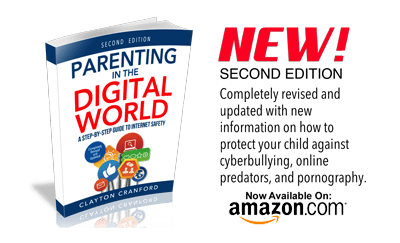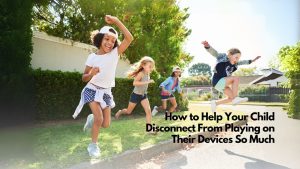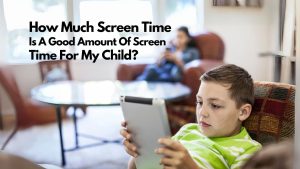What happened to Musical.ly?
Musical.ly launched in 2014. In November 2017, it was acquired by ByteDance, a Beijing-based media and tech company, for a reported $1 billion. At the time, ByteDance already owned a similar app, TikTok, which had launched in China in 2016. According to Reuters—Musical.ly had 100 million monthly active users (who called themselves “Musers”), and Tik Tok had 500 million users in Asia. In fact, TikTok was also the most downloaded iOS app in the first quarter of this year, per market research. So, in early August, TikTok absorbed Musical.ly—all user accounts and videos were moved to TikTok, and the app formerly known as Musical.ly ceased to exist.
What is TikTok?
App Store Description: “TikTok is a global video community. We make it easy for you to watch awesome short videos AND you can also make your own videos by capturing those funny and memorable moments to share with the world. Spice up your videos with our special effects filters, fun stickers, and so much more. Life’s moving fast, so make every second count.” (Apple App Store Link)
Category: Photo & Video
Although the App Store rates TikTok for children 12+, the app’s creator recommends users be age 13+. The app isn’t classified as social media, but it still must comply with COPPA and underage data collection. Even a 13-year-old middle school student is potentially at risk using this app unless parents are well aware of the various problems.
What are teens doing on TikTok?
Musical.ly was primarily a lip-syncing app. The user, known as a “muser,” could make a 15-second looped video of themselves singing their favorite song. Tik Tok has evolved to a broader social-media and entertainment platform with dancing, comedy, and other “shows.”
After you download TikTok and open it on your phone, a video will start playing right away without you even selecting one. To explore further, try the magnifying glass icon next to the home icon, where you can search keywords and hashtags—yes, TikTok uses hashtags. We did some searching, using the typical problematic hashtags that often conjure up inappropriate images and videos, and we really didn’t find much. That’s good, but there is no guarantee that this will always be the case, so keep an eye on it.
As for the appropriateness of the typical content, bad words and sexual lyrics that you find in popular music are often lip-synced by a child. There have also been some reports of videos depicting self-harm and violence, on the app.
Are there predators on Tik Tok?
The short answer is, yes. That is true of any app where the majority of the users are children. The predators go where the kids are. Musical.ly was well known by predators as a place they could meet a young child looking for someone to praise them and be their friend.
Privacy issues
TikTok collects a lot of information about its users per its Privacy Page:
Information you give us. You give us information about you when you register for and/or use the Platform, including your name, age, gender, address, email address, social media login details, telephone number and financial and credit card information and your photograph as well as your language selection.
Information you choose to share from your social networks. If you choose to link your social network or public forum account (e.g. Facebook, Twitter, Instagram, Google or WeChat) to the Platform, you will provide us or allow your social network to provide us with information from your social network or public forum accounts, including your contact list.
Technical Information we collect about you. We automatically collect certain information from you when you use the Platform, including your IP address, location-related data (as described below) or other unique device identifiers, your browsing history (including content you have viewed in the Platform), Cookies (as defined below), your mobile carrier, time zone setting, mobile or device information including the model of your device, your screen resolution, operating system and platform and information regarding your use of the Platform.
Behavioral information we collect about you. We also collect information regarding your use of the Services, e.g. your comments on our Platform or any other user-generated content and video content that you generate through and broadcast on our Platform. In addition, we link your contact or subscriber information with your activity on our Platform across all your devices using your email or social media log-in details.
- Location data.
- Your phone and Facebook contacts.
- Messages.
- Metadata uploaded with each video.
Parental Controls
TikTok has some parental controls. If your child is going to use this app, you must turn them. Can your child turn them off or change their privacy settings at will? Yes, they can. This in itself might be a deal breaker for most Cyber Safety Cop parents.

Should my child have this app?
The answer is, probably not. The minimum age to have an account is 13-years-old. Based on my experience, I would wait until your child is 16-years-old before letting them use it.
If you allow your child to have a TikTok account, and you think they have the maturity to navigate the issues we have already identified, then you should give them very clear expectations on using this app.
- Set up the parental controls as described above.
- Your child’s account should be set to private and the only people you are allowed to be their follower should be someone they actually know, a friend or family member.
- Try to monitor what your child is doing on this and other social media apps. You can download TikTok on your phone and log in with your child’s username and password, and “see” what they are doing. I would also physically drop in on your child time-to-time and watch them interact with the app. Remember, you get the behaviors that you inspect, not what you expect. If you never looked in your child’s room and expected them to make their bed every day, would they?
Here is the bottom line with TikTok and all other social media apps that connect your child with other people: stranger interaction is the core of all online predatory crimes against children. If you can manage this issue, either through parental controls, talking to your child, actively monitoring, and you can sleep at night, then it will probably be okay. If you can’t, then it probably shouldn’t be on your child’s device. Maybe it’s a maturity or age issue. Tell your child, it’s not a “no” forever, just a “no” right now.
Other recommendations
- Go to a free parent seminar hosted at a nearby school. This seminar will change the way you look at your child’s digital world and give you a step-by-step game plan to make your child safe. If you would like to host a parent seminar at your school, fill out the contact form to learn more.
- Purchase the book, “Parenting in the Digital World” on Amazon.com. It will take you step-by-step through the process of making your child safer online.
- Stay on top of the latest online trends by subscribing to our free e-newsletter.
- Install Bark on your child’s phone. Bark will passively monitor your child’s social media and let you know if there is a problem. Use the promo code, “cybersafetycop” to get 15% off.
References:
https://medium.com/s/world-wide-wtf/porn-is-not-the-worst-thing-on-musical-ly-5df07ab842af
https://www.tiktok.com/i18n/privacy/





